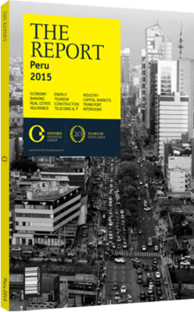Jaime Reusche, Sovereign Risk Analyst for Latin America, Moody’s: Interview

Interview: Jaime Reusche
What does Peru need to do in order to maintain its two-point ratings upgrade?
JAIME REUSCHE: There is a large infrastructure gap in Peru. The country has not been investing as much as Asian economies and has not been committing to modernising infrastructure. However, recently the authorities have been trying to invigorate infrastructure through public-private partnerships and by increasing government fiscal investment in development. It is a recent phenomenon that the scale of investment going to infrastructure is increasing, but there is still a large gap that some analysts estimate could be as big as 30% of GDP.
Given Peru’s growth rate, the economy is starting to bump into certain constraints. Regarding the legal environment, the economic institutions in Peru are very solid, but there are deficiencies in the political institutions. This has more impact on the independence of the judiciary, the quality of education or the potential for corruption. This is costing the country a lot of money in lost economic activity and investment. Efforts to address these long-term issues are beginning to surface, but much more needs to be done for the rating to continue to go up.
What do you expect Peru can offer to and get out of the Pacific Alliance in its own right?
REUSCHE: The fact that the Pacific Alliance was formed indicates the willingness from these countries to support regional economic integration. The nature of the alliance shows there is a different mentality underpinning it than those of other trade blocks, such as Mercosur. Peru’s role serves as a bridge between Chile, Mexico and Colombia.
Each of the members brings something to the table that complements the others. It acts as a stepping stone toward creating better regulation and improving the movement of capital and people among countries. As a regional block, they are more consolidated and competitive in the global market.
The country is dependent on mining. How can it reduce vulnerability to volatile commodity prices?
REUSCHE: From a sovereign point of view there is indeed reliance on the mining sector for fiscal income, but this has been decreasing for the past few years as the efforts of the government have helped diversify fiscal revenues. They have expanded the tax base and introduced measures to increase fiscalisation and tax compliance, and simplify procedures. The country is a producer of raw materials and that is unlikely to change in the near future, but the key to reducing vulnerability is to strengthen manufacturing and promote construction and retail.
Can the National Reactivation Plan effectively promote consumption and foreign investment?
REUSCHE: There are still around two years remaining until the next national election, a process that can hamper these kinds of diversification plans. The fact that there are good technocrats in key positions in public institutions, such as the ministries of finance, commerce and production, means they have a good grasp of what the country needs for sustainable growth and diversification. This, combined with political stability, will attract foreign investment and result in greater economic diversification.
Was the ratings upgrade too early, as 2014 could see the slowest growth of the decade?
REUSCHE: What is rated is not Peru’s macro economy, but its solvency and ability to repay debt. The sovereign balance sheet is among the strongest in Latin America. Public debt to GDP is less than 20% and based on its fiscal performance the country has managed to save resources for fiscal surplus. This has led to an accumulation of savings that provides a large cushion. Net public debt next to these assets is roughly 4% of GDP – the second lowest in the region. Adherence to fiscal rules has anchored credibility, a key strength supporting the ratings upgrade.
You have reached the limit of premium articles you can view for free.
Choose from the options below to purchase print or digital editions of our Reports. You can also purchase a website subscription giving you unlimited access to all of our Reports online for 12 months.
If you have already purchased this Report or have a website subscription, please login to continue.

